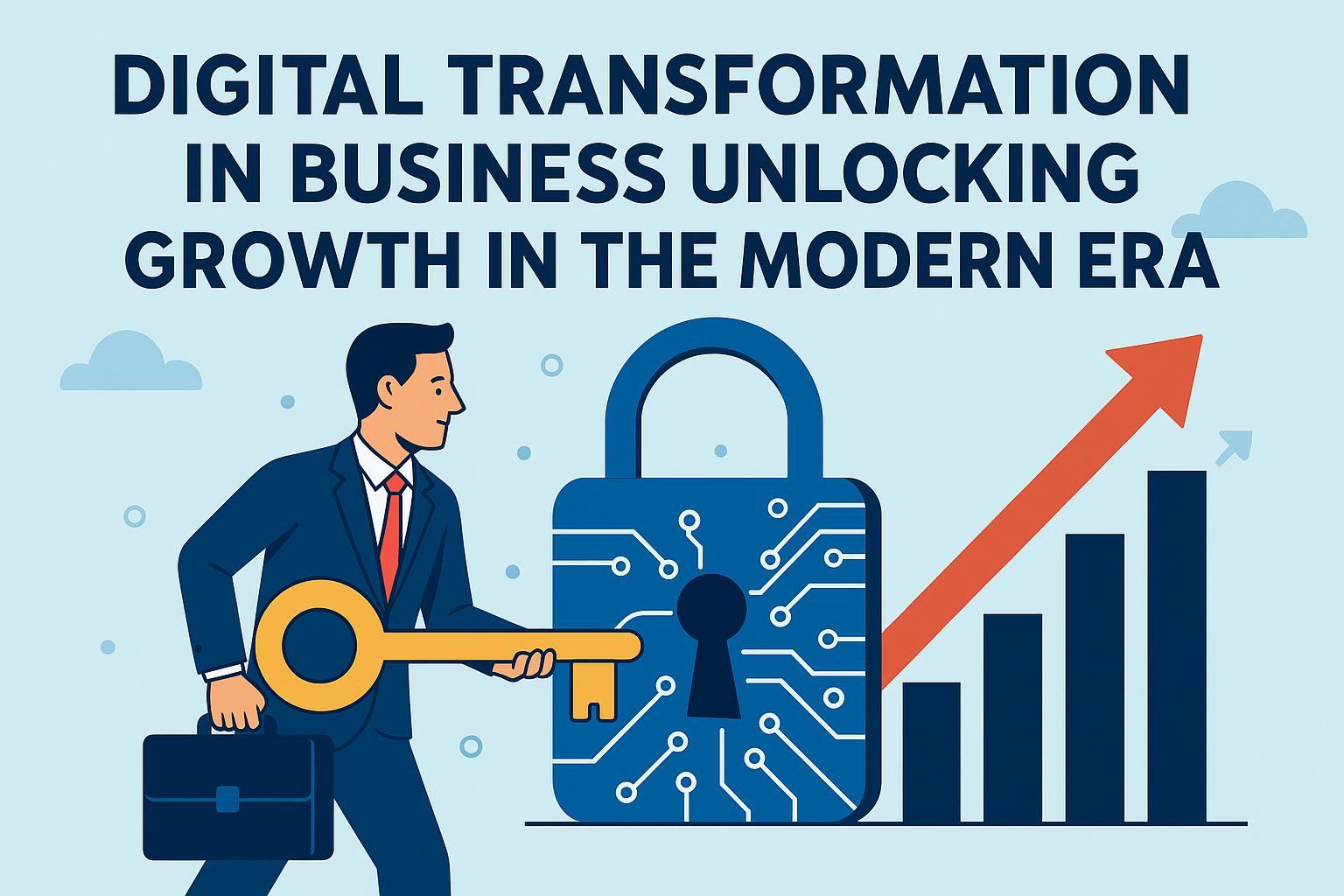The business world is undergoing a massive shift driven by technology. Digital transformation has become more than a buzzword; it is now a survival strategy for organizations across industries. From small startups to global enterprises, companies are rethinking their operations, customer experiences, and business models through digital tools.
This article explores the meaning of digital transformation, why it matters, the core technologies driving it, the challenges companies face, and the opportunities it creates for long-term success.
1. What is Digital Transformation?
Digital transformation refers to the integration of digital technologies into all areas of a business. It goes beyond simply adopting new software—it requires a cultural shift that redefines how businesses deliver value to customers, streamline operations, and adapt to change.
For example, a retail company may move its sales online, use artificial intelligence to recommend products, and adopt cloud-based systems for better data management. Similarly, a financial institution may embrace mobile banking, blockchain, and automation to improve customer trust and efficiency.
2. Why Digital Transformation Matters
2.1 Staying Competitive
In today’s digital-first economy, businesses that fail to adopt new technologies risk being left behind. Competitors that embrace digital tools gain faster response times, better customer insights, and more efficient processes.
2.2 Enhancing Customer Experience
Customers expect personalized, seamless experiences across digital channels. Businesses that use data analytics, chatbots, and mobile platforms can provide real-time support and tailored services that strengthen loyalty.
2.3 Increasing Efficiency
Automation, cloud computing, and AI reduce manual tasks and streamline operations. This allows employees to focus on innovation rather than repetitive work, improving productivity and profitability.
2.4 Driving Innovation
Digital transformation enables businesses to experiment with new products, services, and business models. Companies can pivot faster, test ideas, and bring innovations to market more effectively.
3. Key Technologies Driving Digital Transformation
3.1 Artificial Intelligence (AI)
AI helps businesses predict consumer behavior, automate customer service, and optimize supply chains. Machine learning algorithms analyze vast amounts of data to provide valuable insights that guide decision-making.
3.2 Cloud Computing
Cloud platforms allow businesses to store and access data securely from anywhere, reducing the need for physical infrastructure. This flexibility supports remote work and scalable growth.
3.3 Big Data Analytics
Data is the new fuel of business. Big data analytics helps organizations understand customer behavior, market trends, and operational inefficiencies. Insights from data allow companies to make smarter, evidence-based decisions.
3.4 Internet of Things (IoT)
IoT devices connect physical objects to the internet, providing real-time data on everything from inventory levels to machine performance. This improves efficiency and reduces downtime.
3.5 Blockchain Technology
Blockchain enhances transparency, security, and trust in business operations. It is widely used in supply chain management, financial services, and identity verification.
4. Challenges of Digital Transformation
4.1 High Implementation Costs
Adopting digital solutions often requires significant investment in infrastructure, training, and change management. Many small and medium-sized enterprises struggle with budget constraints.
4.2 Resistance to Change
Employees and managers may resist new systems, preferring familiar methods. Successful digital transformation requires strong leadership and a culture that embraces change.
4.3 Cybersecurity Risks
As businesses digitize, they become more vulnerable to cyberattacks. Protecting sensitive data and systems is a critical challenge.
4.4 Skill Gaps
The demand for digital skills is growing, but many organizations face shortages of qualified professionals in fields such as AI, data analytics, and cybersecurity.
5. Strategies for Successful Digital Transformation
5.1 Define a Clear Vision
Businesses must set clear goals for digital transformation. This could include improving customer experience, reducing costs, or entering new markets.
5.2 Invest in Talent
Hiring and training employees with digital skills is essential. Companies should also encourage continuous learning to keep pace with evolving technologies.
5.3 Start Small, Scale Fast
Rather than overhauling everything at once, businesses should start with pilot projects. Successful initiatives can then be scaled across the organization.
5.4 Prioritize Cybersecurity
Strong security frameworks, regular audits, and employee awareness training are crucial to safeguard digital assets.
5.5 Embrace Collaboration
Digital transformation requires cooperation between departments, partners, and customers. Open communication and shared responsibility help ensure success.
6. Opportunities from Digital Transformation
6.1 Global Reach
Digital platforms enable businesses to expand beyond their local markets. Even small companies can sell products worldwide using e-commerce and digital marketing.
6.2 Data-Driven Decisions
Real-time insights from analytics empower businesses to respond quickly to market shifts, optimize pricing, and improve operations.
6.3 New Revenue Models
Subscription services, digital marketplaces, and online platforms allow businesses to diversify income streams.
6.4 Sustainable Practices
Technology helps businesses track energy usage, reduce waste, and adopt environmentally friendly solutions, contributing to corporate sustainability goals.
7. The Future of Business in a Digital World
The pace of technological change shows no sign of slowing down. In the future, businesses will rely even more on AI, automation, and digital ecosystems. Emerging technologies like 5G, augmented reality, and quantum computing will further transform industries.
Organizations that embrace digital transformation now will not only survive but thrive in the coming decade. They will enjoy stronger customer relationships, more efficient operations, and the ability to innovate continuously.
Conclusion
Digital transformation is no longer optional—it is essential for growth and competitiveness in the modern era. While the journey comes with challenges such as high costs and cybersecurity risks, the rewards are immense. Businesses that embrace digital technologies, foster a culture of innovation, and adapt quickly to change will secure long-term success.
The digital future is already here, and the businesses that act today will be the leaders of tomorrow.

